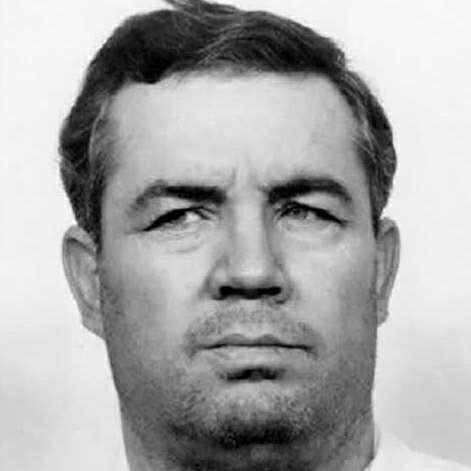
1943 - 1999
James Otto Earhart
Summary
Name:
James Otto EarhartNickname:
George StevensYears Active:
1981 - 1987Birth:
April 29, 1943Status:
ExecutedClass:
MurdererVictims:
2+Method:
Shooting / Stabbing / Strangulation / BludgeoningDeath:
August 11, 1999Nationality:
USA
1943 - 1999
James Otto Earhart
Summary: Murderer
Name:
James Otto EarhartNickname:
George StevensStatus:
ExecutedVictims:
2+Method:
Shooting / Stabbing / Strangulation / BludgeoningNationality:
USABirth:
April 29, 1943Death:
August 11, 1999Years Active:
1981 - 1987bio
James Otto Earhart was born on April 29, 1943, in the United States and spent most of his life in Brazos County, Texas. Public records describe him as a local junk dealer who lived in a house shared with his mother and siblings. Though not much is publicly documented about his early childhood or psychological profile, his adult life was marked by transient employment, poverty, and a deepening entanglement with criminal behavior. Neighbors and acquaintances described him as reclusive and physically distinct—he weighed close to 400 pounds and drove an older, rust-colored vehicle.
Prior to the 1987 crime for which he was convicted, Earhart had interactions with law enforcement but had not been publicly connected to any major violent crimes. However, his proximity to multiple unsolved murders in Brazos County raised suspicion. These concerns would only intensify following his arrest in the Kirtland case, leading authorities to reexamine his possible involvement in other cases dating back to the early 1980s. While he denied any involvement in violent crimes during his lifetime, advances in forensic technology eventually contradicted these denials after his execution.
murder story
On May 12, 1987, 9-year-old Kandy Janell Kirtland was dropped off by her school bus at an intersection near her home in Bryan, Texas. A fourth-grade student at Crockett Elementary School, she was last seen alive at approximately 3:40 PM talking to a man parked in a car in front of her driveway. She had reportedly entered her home, left her backpack by the door, and placed her house key near the kitchen stove before returning outside—presumably to retrieve her backpack—only to vanish without a trace. Her parents found her missing later that day and immediately contacted authorities.
Eyewitnesses described a suspicious man seen near the home—a heavyset white male driving a brown or burnt-orange 1976 Chevrolet Impala. The man had reportedly visited the house a day earlier under the pretense of wanting to purchase a paintball gun. Police used this information to generate a suspect sketch, and an arrest warrant was issued on May 22, 1987, for 44-year-old James Otto Earhart. Thousands of flyers with his image were distributed across Bryan and Houston. On May 26, 1987, Earhart was located and arrested without incident in the Sam Houston National Forest, where he was found sleeping in a recently traded car. Authorities recovered a .22-caliber pistol and later uncovered Kandy Kirtland’s address written on a note in his home, along with newspaper clippings about her abduction.
That same day, a passerby in the forest near the arrest site discovered a concealed body wrapped in rags and cardboard with a tennis shoe sticking out. An autopsy on May 28, 1987, confirmed the body was Kandy’s. She had been shot in the head and left in the woods. Earhart was charged with capital murder and kidnapping. Due to widespread media coverage and the gravity of the crime, the trial venue was moved to Giddings, Texas, and he underwent psychiatric evaluation at Memorial City Hospital in Houston.
At trial, Earhart attempted to suppress his confession, arguing he had been in a mentally altered state, possibly under hypnosis, and was fatigued during interrogation. Despite his defense, prosecution witnesses testified that he matched the abductor’s description, that he had used an alias to exchange cars, and that he had stolen towels from a hotel while evading arrest. After less than three hours of jury deliberation, Earhart was convicted of capital murder on July 2, 1988, and sentenced to death.
In June 1993, his case was reviewed by the U.S. Supreme Court along with other death row cases, but his sentence was upheld. He remained on death row for over a decade and was executed by lethal injection at the Huntsville Unit on August 11, 1999. Earhart gave no final statement.
After his execution, authorities continued investigating Earhart’s links to other unsolved homicides. In 2019, forensic genealogy testing by Parabon NanoLabs linked Earhart posthumously to the 1981 murder of an unidentified woman. Authorities are still investigating his potential involvement in additional crimes, including the suspected murders of Ruth Richardson Green and Alice Martin—both abducted and killed under suspiciously similar circumstances in the mid-1980s. While no additional charges were ever filed, law enforcement has not ruled out the possibility that Earhart was a serial offender who evaded capture for years before finally being arrested in the Kirtland case.